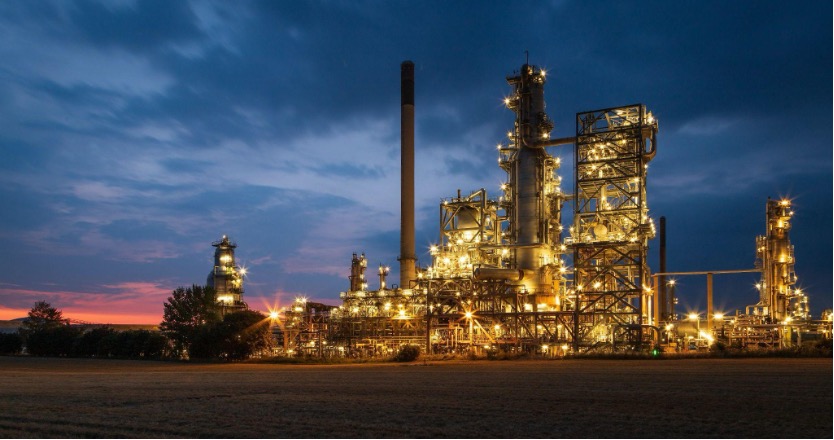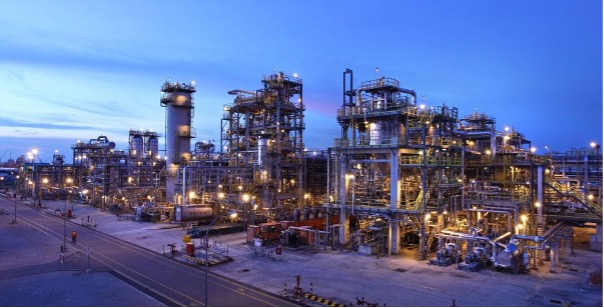Short take: Specialty petrochemicals are moving from the sidelines to center stage. Companies now win on chemistry that solves precise problems — in electronics, pharmaceuticals, aerospace, advanced construction, and clean manufacturing — rather than on sheer production volume. Egypt can play in this space by tying gas feedstocks, midstream assets, and engineering talent to customer-driven R&D and export-ready, niche products.
Why Specialty Petrochemicals Are Rising
Specialty petrochemicals sit at the intersection of materials science and end‑use performance. They differ from commodity chemicals in scope and purpose: commodities focus on bulk output and price cycles; specialties focus on function, formulation, and customer fit. Demand is growing as manufacturers chase materials that meet tight specs for chip fabrication, high‑performance coatings, biocompatible ingredients, and low‑VOC products.
Multiple drivers push this shift:
- Urbanization and industrial growth keep expanding the base of end‑markets that need advanced chemistries for performance and compliance (Seatex).
- Specialty producers earn more pricing flexibility and steadier returns when they tailor products for defined use‑cases (Umbrex primer).
- Global demand for specialty chemicals remains on an upward path, with analysts tracking steady mid‑single‑digit growth through the decade (TechSci Research, global; Grand View Research).
Specialty vs. Commodity: What Actually Defines the Difference?
Commodity chemicals are standardized molecules (think ethylene, methanol, benzene) sold in high volumes with prices that swing with energy costs and global cycles.
Specialty chemicals earn their keep because of what they do in a specific process or product: dispersion, adhesion, flame retardancy, UV stability, purity for semiconductor steps, biocidal efficacy, or ultra‑clean performance for pharma.
Key contrasts you can test in any P&L or plant tour:
- Customer intimacy: specialties are co‑developed with clients; commodities ship to market specs.
- Batch/continuous balance: specialties often run in smaller, flexible batches with tight quality windows; commodities favor mega‑scale continuous units.
- Pricing logic: specialties price on value-in-use; commodities price on cost-plus and global benchmarks. Margin profiles differ accordingly, with specialties commonly capturing higher gross and EBITDA margins given their differentiation (Umbrex; Umbrex margin analysis).
High‑Value Applications: Electronics, Pharma, Aerospace
Specialty petrochemicals support sectors where a minor impurity or wrong chain length can derail performance.
- Electronics & semiconductors: ultra‑pure solvents, photoresists, etchants, specialty polymers, and cleaners support lithography and wafer processing. Manufacturers require validated lots and repeatable purity for yield stability (Seatex overview).
- Pharmaceuticals & healthcare: excipients, controlled‑release polymers, disinfectants, and solvent systems must meet pharmacopeia standards; documentation and traceability are part of the product.
- Aerospace: high‑temperature resins, advanced adhesives, anti‑corrosion systems, and lightweight composite ingredients command premium pricing because they reduce weight, extend service life, and pass stringent certification.
Why Investors Like Specialty Petrochemicals
Investors look for segments where returns depend on know‑how and customer stickiness, not only feedstock cycles. Specialties check those boxes:
- Priced on performance: price increases tie to application outcomes, so margins can hold during energy swings.
- Recurring demand: once a specialty passes qualification, customers avoid switching due to re‑validation costs and risk.
- Portfolio resilience: blended portfolios of construction additives, performance coatings, water treatment, and electronics materials smooth cyclicality.
Analysts note that for unique products, gross margins can reach 30–50% and EBITDA margins 15–25% in stable portfolios (Umbrex industry guide).
Custom Production and Client‑Specific Formulations
Specialty production feels closer to contract manufacturing plus application lab than to simple molecules at scale. Winning plants:
- Run smaller, flexible vessels and tolling lines that can pivot across SKUs.
- Maintain rigorous change‑control, cleaning, and documentation.
- Embed process engineers who work directly with customer R&D.
A typical journey from idea to product includes lab screening, pilot scale‑up, field trials, and quality system lock‑in, with strong partners accelerating each stage (Seatex on product journeys).
R&D: The Beating Heart of Specialty Development
You build specialty franchises through science, not capacity alone. Practical steps that make R&D count:
- Voice of process: start with the customer’s pain point (e.g., residue in a wet‑etch step, delamination at high humidity, microbial control in water reuse). Translate it into performance targets and test methods.
- Iterative formulation: use additive packages, polymer architecture tweaks, and surface chemistry to meet those targets.
- Scale‑up discipline: design experiments to anticipate shear, heat transfer, and mixing changes between lab, pilot, and plant.
R&D portfolio reviews, pipeline health, and stage‑gate discipline are now standard practice across specialty players (Umbrex R&D analysis playbook).
Green and Bio‑Specialties: Trends Shaping Formulation Choices
Customer and regulatory pressure continue to shift recipes toward lower toxicity, lower VOC, bio‑based feedstocks, and circularity. The direction of travel is clear in both developed markets and emerging hubs:
- Buyers request bio‑based surfactants, low‑formaldehyde resins, and solvent‑free adhesives to meet corporate ESG and procurement scores.
- Producers position greener chemistries as ways to meet mandates and improve energy footprints (Seatex market notes).
- In the Middle East, analysts expect specialty growth tied to industrial diversification and higher‑value exports, including performance chemicals with sustainability features (IMARC Middle East outlook).
Market Segmentation and Where Demand Is Growing
Global trackers group specialties across CASE (coatings, adhesives, sealants, elastomers), construction chemicals, water treatment, textile auxiliaries, specialty polymers, electronic chemicals, flavor & fragrance ingredients, and oilfield chemicals. Independent outlooks see steady growth toward 2030, led by institutional & industrial cleaners and CASE segments (Grand View Research snapshot).
Egypt’s Demand Picture
Egypt’s specialty chemicals market draws demand from construction, automotive, food & beverages, and healthcare, validated by local infrastructure spending and manufacturing expansion (TechSci Egypt report). The government’s industrial strategy under Egypt Vision 2030 backs import substitution and export‑oriented manufacturing (Vision 2030 document). In parallel, downstream programs in refining and petrochemicals aim to lift capacity, strengthen integration, and add value from domestic gas (Egypt Oil & Gas feature; EGPC/ECHEM plan coverage).
Export Potential for Niche Products

Specialties travel well when they solve a problem for regional plants that lack local formulation labs. Egypt can target Africa, the Levant, and Southern Europe with:
- Construction admixtures matched to hot‑climate curing conditions.
- Water‑treatment packages for desalination and reuse.
- Specialty polymers and additives for packaging lines serving food exports.
Recent reporting shows Egypt pushing exports of energy‑intensive materials, including chemicals and fertilizers, amid European capacity resets and local cost structures (Reuters analysis). Specialized formulations can raise value per ton and reduce exposure to bulk swings.
Technical Challenges in Specialty Manufacturing
The upside comes with real hurdles. Teams should plan for:
- Contamination control: even minor cross‑contact can fail a pharma or semiconductor lot.
- Data & documentation: customers expect lot histories, certificates, and corrective actions on file.
- Scale‑up surprises: viscosity, heat removal, and mixing profiles change at plant scale; design trials to learn fast.
- Feedstock consistency: in volatile markets, keep dual‑source strategies and robust specs.
- Talent mix: blend analytical chemists, formulation scientists, and process engineers; reward learning cycles.
Industry playbooks emphasize that competitive specialty producers manage price, portfolio, and supply risk at a granular level (Umbrex competitive positioning).
Egypt’s Capacity to Enter Specialty Markets
Egypt can convert existing advantages into specialty platforms:
- Feedstock and integration: an updated national petrochemicals plan through 2040 seeks to raise capacity and expand derivatives that enable downstream specialties (Ministry/ECHEM updates).
- Industrial zones: the Suez Canal Economic Zone (SCZone) concentrates infrastructure, logistics, and export operations suitable for batch specialty units next to cracking and refining assets (State Information Service coverage; recent project contracts).
- Regional access: proximity to EU, Africa, and Gulf markets shortens fulfillment times and supports service‑oriented sales.
- Policy direction: Vision 2030 and UNIDO’s PCP framework target chemicals among priority sectors, tying growth to productivity and sustainability metrics (UNIDO PCP – Egypt).
Practical Playbook: From Petrochemicals to Specialties
If you operate in Egypt and want to step into The Rise of Specialty Petrochemicals, map a path that starts with customers, not with reactors:
- Choose anchor segments (e.g., construction chemicals, water treatment, packaging additives) where local demand exists and export pull is visible.
- Build an applications lab with test methods your customers trust; hire chemists who can visit plants and solve problems.
- Qualify relentlessly: document stability, shelf life, compatibility, and regulatory compliance.
- Design flexible capacity: multipurpose vessels, strong cleaning validation, and fast changeovers.
- Pursue integration gains: use local olefins/aromatics to make higher‑value intermediates; capture logistics advantages.
- Offer service with the product: technical training, on‑site trials, and formulation tweaks.
For a macro view of why petrochemical hubs invest in value‑added chains, see this lens on investment drivers and downstream integration logic (Anchorage Investments insights; Umbrex petrochemicals overview).
Case in Point: An Egyptian Push Toward Integrated, Higher‑Value Chemistry
Egypt continues to roll out downstream projects designed to raise output and create room for specialty derivatives. Public updates reference new complexes and integration steps linked to export goals and greener operations.
Moharram and Anchorage Investments: From Platforms to Products
One company leaning into this direction is Anchorage Investments, led by Dr. Ahmed Moharram. The group’s stated strategy focuses on petrochemicals and mining‑driven manufacturing, with integration across project development, engineering, and operations in Egypt (Anchorage homepage). Public reporting highlights a planned $2.5 bn petrochemicals complex in the SCZone aimed at producing a range of derivatives and targeting significant export receipts in early operations (Daily News Egypt; integration note).
Dr. Moharram’s background in chemical engineering and strategic planning aligns with the shift toward customer‑driven, higher‑margin chemistry. Under his leadership, Anchorage pursues projects that:
- Connect upstream feedstocks with downstream specialty‑friendly intermediates.
- Embed environmental performance and emissions reduction from design.
- Align with Egypt Vision 2030 industrial goals to lift value‑added exports and local content (Vision 2030).
This approach sets a base for specialty platforms — think construction admixtures, tailored polymers, and performance additives — that serve regional needs and meet stricter specs.
What Success Looks Like for Egypt’s Specialty Petrochemicals
Success is visible on three fronts:
- Customer stickiness: multi‑year supply agreements linked to performance specs and shared test methods.
- Portfolio shape: a balanced mix of CASE, water treatment, packaging additives, and pharma‑adjacent materials.
- Export mix: a higher share of niche products per shipped ton, not just higher tonnage.
Policy signals and private projects suggest momentum, from raising national capacity to siting integrated complexes with room for derivative specialties (Egypt Oil & Gas – national plan; SIS project updates).
Conclusion: The Rise of Specialty Petrochemicals
Specialty petrochemicals put chemistry plus service at the core of growth. Producers that engage customers early, invest in applications labs, and design flexible plants will earn steadier margins and create export‑ready niches. Egypt has the feedstocks, sites, and regional access to build those platforms — and projects now underway point in that direction (Anchorage insights; state project updates; Vision 2030).
